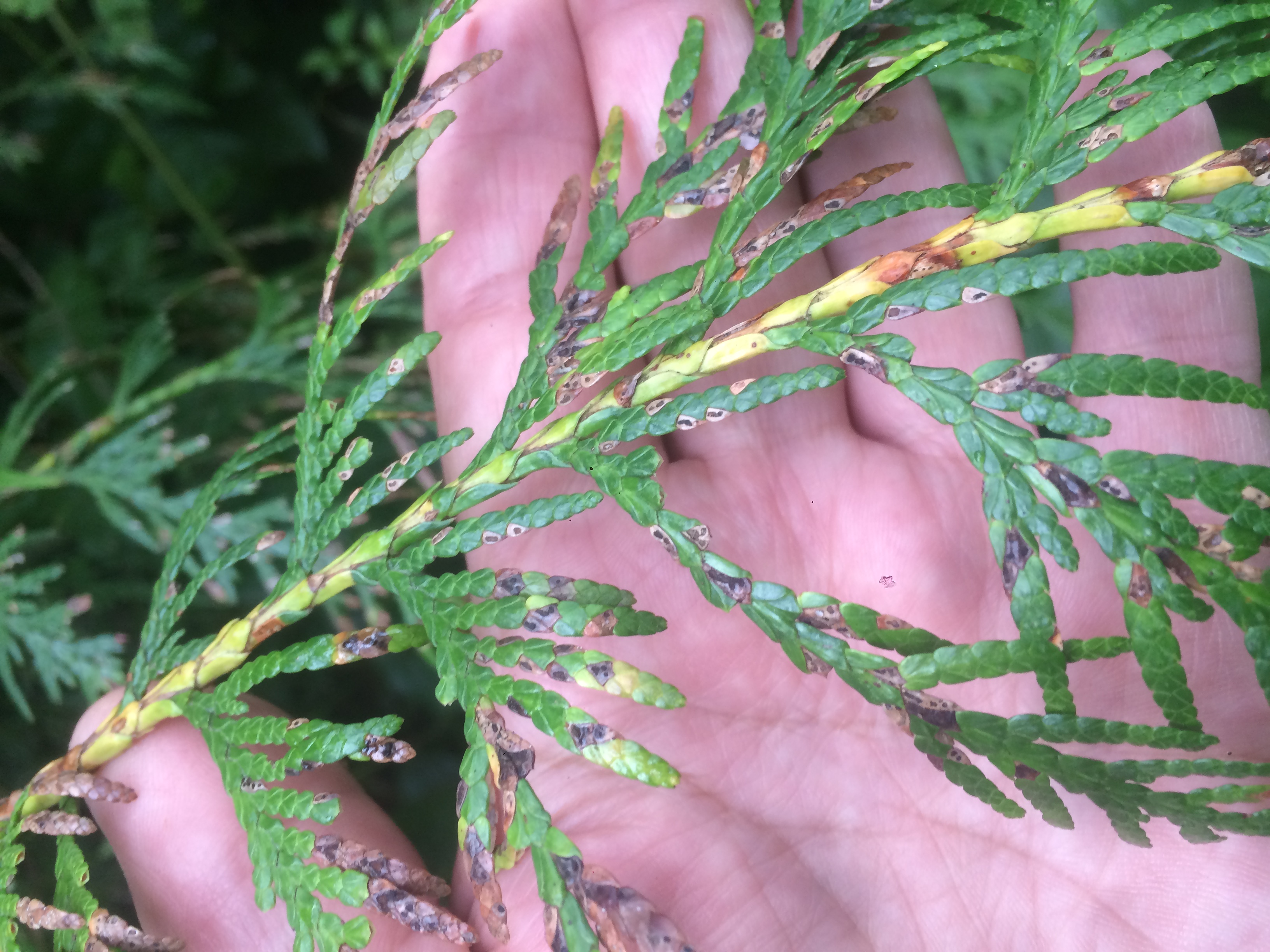Cedar leaf blight
Cedar leaf blight is caused by the pathogen Didymascella thujina which affects only western redcedar (Thuja plicata) throughout its range in British Columbia. It is most prevalent and damaging in the South and West Coast Regions.
Description
Signs of cedar leaf blight can first appear as early as the fall on the current year’s growth as dead individual leaflets with tan to brown coloured and oval-shaped fruiting bodies. However, in most cases the disease does not express itself until one year after infection. Infection occurs where spores are released from fruiting bodies on previously infected leaflets. High humidity or dew, or rainfall in the spring are important for both spore release as well as spore germination. Once spore release has completed, the fruiting bodies fall-out leaving a shot hole appearance to the leaflet. Infected leaflets affect a leaflets photosynthetic capacity, and if infections are severe enough the growth of the tree will be impacted and stress the host.
Management
Cedar leaf blight can be controlled in forest seedling nurseries through cultural or chemical control methods. Employing these methods will ensure that disease-free seedlings are planted into reforestation sites. However, once the seedlings are in the site they will becomes infected by the disease present in surrounding cedar forests. There is no known information on protecting trees from cedar leaf blight in forested stands.

Cedar leaf blight on western red cedar. Brown coloured dead leaflets with black fruiting bodies.
Contact information
Contact us if you have questions about cedar leaf blight in British Columbia.
